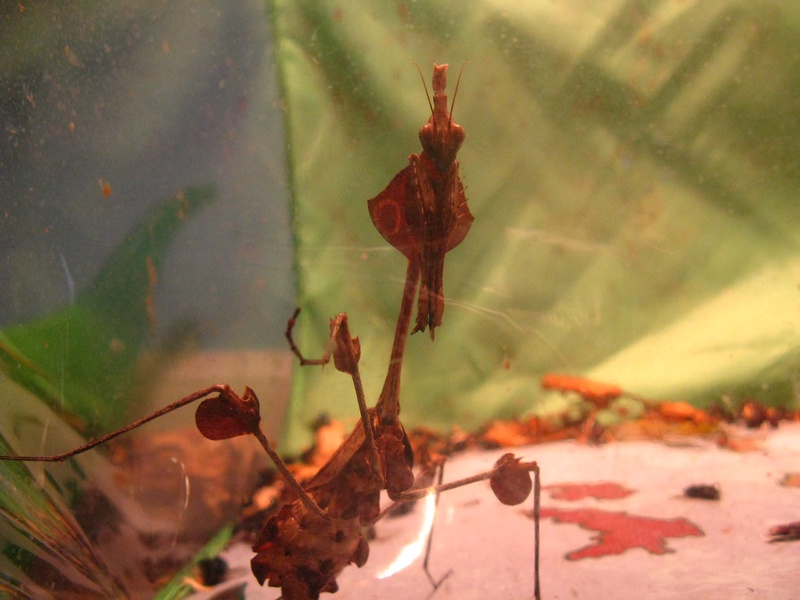meaganelise9
Well-known member
Let me ask you folks this: do you ever do autopsies on mantids when they don't die of old age?
I ask because I did last night, and I found some unexpected things. My P. aeruginosa was egg bound and died. She'd stopped eating and by yesterday had become relatively motionless, so I put her down. What I noticed when I tried to feed her that night was that the cricket immediately went to a small black spot on her back and started biting. I removed it right away of course. The black spot was under her wings where it wouldn't normally be seen easily. I've seen other people post about a black spot here or there that tends to look pretty superficial. The spot was specifically right under the part of her right wing that was wrinkled. It hadn't inflated right in her last molt (before I had her). My thought was that perhaps that wrinkled end of the wing had been trapping moisture, which could have been a catalyst for a bacterial infection. The spot was small, but when I cut her open after she'd been in the freezer, everything past that point was black inside. I'm curious about other people's experiences with black spots like these. I should really have taken photos of all this, but honestly, I was too much of a mess, all upset over the loss of such a pretty girl (now a calendar girl)!
I ask because I did last night, and I found some unexpected things. My P. aeruginosa was egg bound and died. She'd stopped eating and by yesterday had become relatively motionless, so I put her down. What I noticed when I tried to feed her that night was that the cricket immediately went to a small black spot on her back and started biting. I removed it right away of course. The black spot was under her wings where it wouldn't normally be seen easily. I've seen other people post about a black spot here or there that tends to look pretty superficial. The spot was specifically right under the part of her right wing that was wrinkled. It hadn't inflated right in her last molt (before I had her). My thought was that perhaps that wrinkled end of the wing had been trapping moisture, which could have been a catalyst for a bacterial infection. The spot was small, but when I cut her open after she'd been in the freezer, everything past that point was black inside. I'm curious about other people's experiences with black spots like these. I should really have taken photos of all this, but honestly, I was too much of a mess, all upset over the loss of such a pretty girl (now a calendar girl)!













































